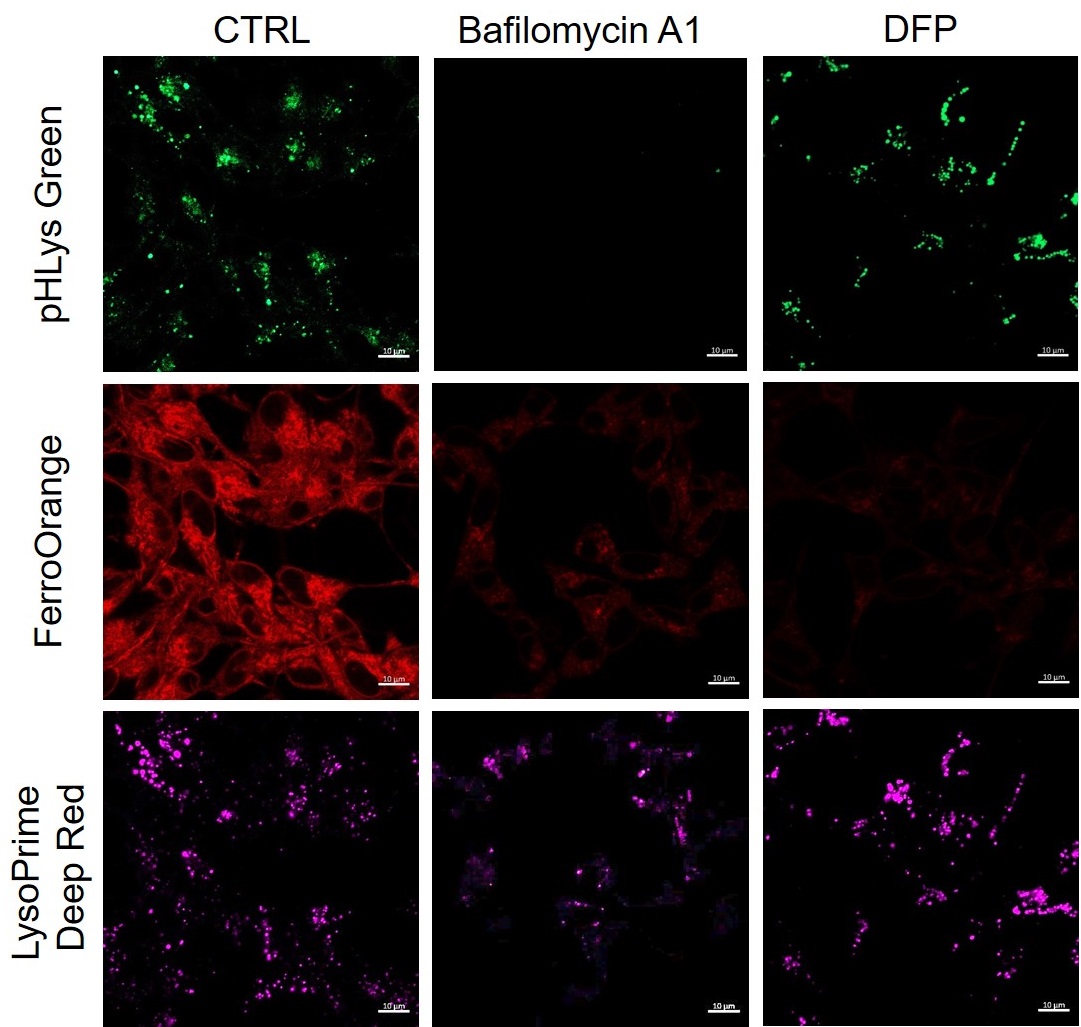Previous Science Note
| Ferroptosis is influenced by lysosomal activity, particularly through its roles in iron homeostasis, membrane integrity, and the breakdown of antioxidant defenses. This Science Note introduces recent insights into how lysosomal function influences ferroptotic cell death, highlighting emerging mechanisms linking lysosomal metabolism, iron release, and lipid peroxidation. | ||||||||||||||||||||||||
|
Activation of lysosomal iron triggers ferroptosis in cancer (Nature, 2025) Highlighted technique: Click chemistry, exemplified by azide–alkyne cycloaddition, enables rapid and selective covalent linkage between functional groups. This study used an alkyne-containing Liproxstatin-1 analogue (cLip-1) and visualized its intracellular distribution via click reaction to clarify Liproxstatin-1’s mechanism of action. Related technique Intracellular Iron Detection, Lipid Peroxide Detection (used in this article) |
||||||||||||||||||||||||
|
SLC7A11 is an unconventional H+ transporter in lysosomes (Cell, 2025) Highlighted technique: The authors screened a lysosomal membrane protein KO library by measuring lysosomal acidity with a pH-sensitive dye. Unlike most cells, SLC7A11-KO cells maintained acidity after bafilomycin A1 treatment, identifying SLC7A11 as a key regulator of lysosomal H⁺ efflux. Related technique Lysosomal Analysis, Cystine Uptake Assay |
||||||||||||||||||||||||
|
Glucose starvation causes ferroptosis-mediated lysosomal dysfunction (iScience, 2024) Highlighted technique: In this study, lysosomal functional changes under glucose starvation were evaluated using pH-sensitive probes, protein analysis from isolated lysosomal fractions and autophagy assay. Imaging of lipid peroxidation and intracellular iron was further used to link glucose deprivation with lysosomal dysfunction and ferroptosis. Related technique Intracellular Iron Detection (used in this article), Autophagy Detection (used in this article) |
||||||||||||||||||||||||
Related Techniques (click to open/close)
|
||||||||||||||||||||||||
Application Note (click to open/close)
|
||||||||||||||||||||||||
|
In neurodegenerative diseases, the relationship between lysosomal function and iron has attracted attention, and it has been reported* that lysosomal neutralization prevents the breakdown of iron stores (Transferrin or Ferritin), resulting in a decrease in intracellular iron. *Mol Cell., 2020, 77(3), 645-655
|
||
|
|
<Condition> |
|

















